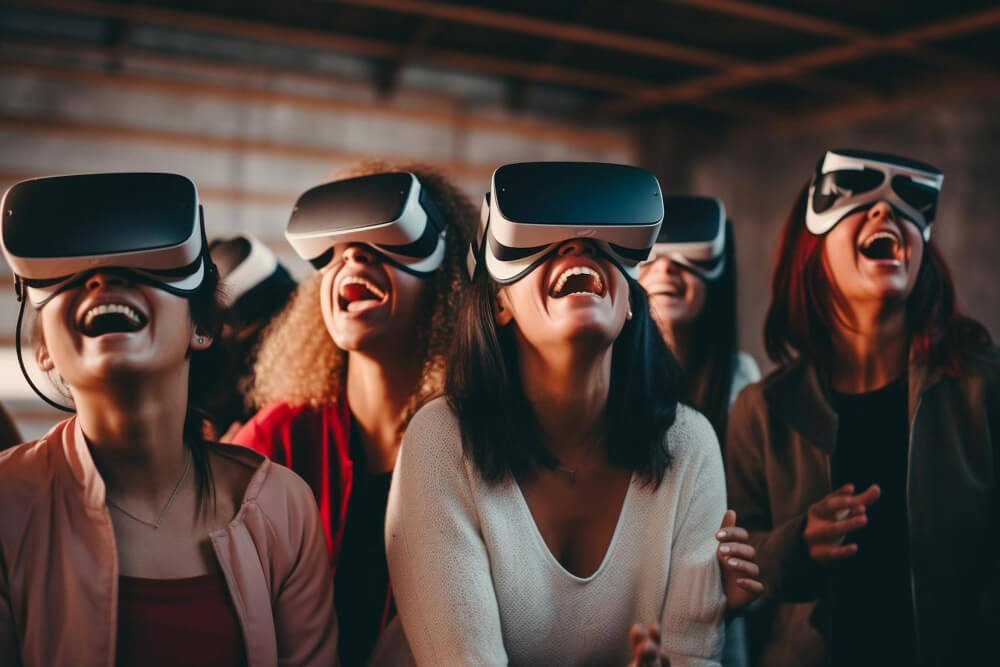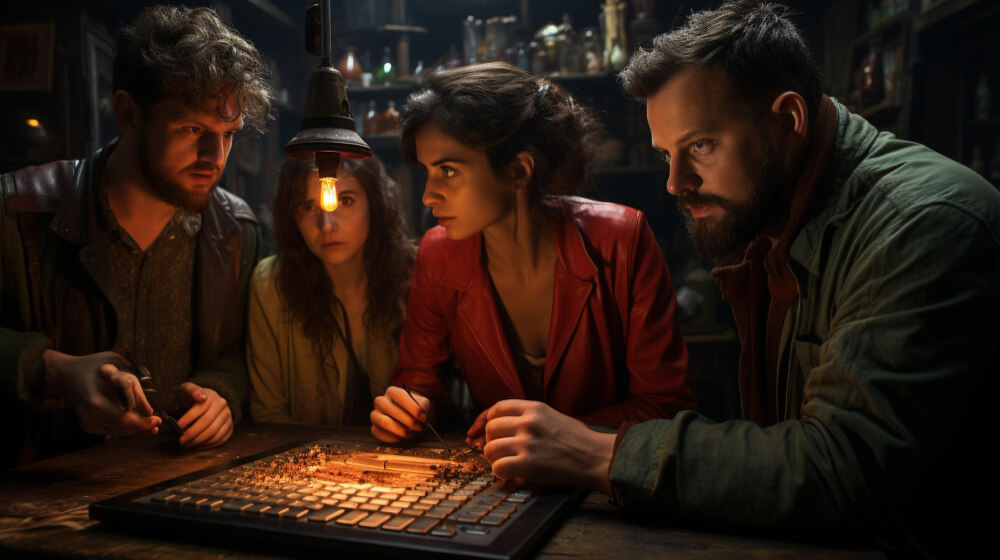Evolution of Escape Rooms: From Classic to VR
Wed, 30 Aug, 2023
A captivating exploration of the evolution of escape rooms from their origins to the groundbreaking introduction of Virtual Reality.
The popularity of Escape Rooms has not only spread due to the exciting experience they offer but also their role in fostering team building. Companies have recognized these rooms as ideal for enhancing their employees' collaboration, communication, and problem-solving skills.
However, not everything is always positive in the world of escape rooms. Despite their appeal, operators must improve their offerings to meet customer expectations, which opens up opportunities for innovations like technology and Virtual Reality (VR). Nevertheless, maintaining these standards and integrating new technologies can be costly, potentially putting smaller operators at a disadvantage compared to larger, tech-oriented companies.

The Birth of Escape Rooms
Escape rooms have their roots in the early 2000s when they were initially developed as physical adventure games. Participants were locked in a room and had to solve puzzles and decipher clues to escape. These initial escape rooms gained popularity in Japan and inspired a new form of entertainment.
With an average game duration of 60 minutes, participants were provided with an engaging and challenging experience. However, alongside the fascination these games offered, there were also challenges. Some players found the idea of being confined in tight spaces claustrophobic, causing feelings of discomfort or even distress.
Simultaneously, escape room creators had to ensure that the engaging puzzles struck a balance between difficulty and solvability to prevent frustration and give players a sense of accomplishment. Over time, this led to a variety of escape room types and difficulty levels, catering to a broader audience.
The Revolution: Escape Rooms with Live Acting
To further enhance the appeal of escape rooms, some rooms introduced live actors into the experience. This addition brought an entirely new dimension to the gameplay. Participants were no longer solely reliant on themselves; they interacted with characters and performers to solve puzzles and uncover secrets.
Challenges and Opportunities of Integrating Live Acting into Escape Room Games
The introduction of Escape Rooms with live actors marked a turning point in the world of puzzle spaces. While traditional escape room games focused on participants' creative minds, the inclusion of actors allowed for deeper immersion in the narrative, resulting in a heightened emotional experience.
However, this revolution also posed challenges. Synchronizing live actors with puzzles and clues required precise planning and coordination. A seamless transition between interactions with actors and the actual exit games was crucial to maintaining the flow of gameplay. Additionally, the question arose of how extensively actors' roles should be integrated into the experience without detracting from the puzzle-solving allure.

The Diversity of Live Acting Escape Rooms
The introduction of escape rooms with live actors led to a wide range of possibilities. From historical scenarios to modern crime stories, these rooms provided participants with the opportunity to take on different roles and actively influence the storyline.
"Maniac" - A Standout Example of Escape Rooms with Live Acting
The "Maniac" escape rooms represent an impressive evolution in the realm of puzzle games. Unlike traditional rooms, they offer an immersive experience by combining classic puzzles with live actors. These performers bring horror stories and complex scenarios to life, allowing players to delve deep into narratives and interact directly with characters.
This unique Escape Room Innsbruck experience involves not only puzzle-solving but also interaction and immersion into the story. Players are challenged to think creatively together to escape seemingly impossible situations. The actors introduce realism and unpredictability, intensifying the experience and increasing the level of challenge.
In conclusion, the integration of live actors into "Maniac" escape rooms signifies a profound innovation that enriches the traditional puzzle experience. This fusion also appeals to those who may not have been captivated by escape rooms before, establishing a stronger connection between participants and the narrative. It's a fusion of intellect, emotions, and interaction that blurs the boundaries between reality and the game world.
The Rise of Virtual Reality
The latest and most exciting advancement in escape rooms is undoubtedly the introduction of Virtual Reality. The fusion of cutting-edge technology with the excitement of escape rooms expands the audience and allows for the creation of even more complex and captivating puzzles.
The Enchantment of Virtual Reality
Virtual Reality (VR) has opened the door to a world where the lines between reality and illusion blur. Players can now experience the best escape games with unprecedented depth and detail. The ability to move within confined spaces while being surrounded by realistic visual and auditory impressions enhances the thrill and intensity of the gameplay significantly. The environment is so lifelike that players feel as if they are truly present, elevating the entire experience to a new level.
Innovation on New Terrain
The infusion of Virtual Reality into the escape room arena marks an exhilarating shift, pushing the envelope of what's achievable. As this technology matures and advances, aficionados of escape rooms can anticipate even richer, more challenging, and enveloping experiences. The convergence of the adrenaline-driven allure of top-tier escape games and the avant-garde tech of Virtual Reality signals a thrilling horizon for all poised for such a journey.

Challenges and Opportunities
Despite the exciting possibilities that Virtual Reality escape rooms offer, challenges must also be considered. The technology requires specialized equipment and can be challenging for some players, especially those prone to motion sickness. Additionally, the costs associated with implementing and maintaining VR escape rooms may be higher than traditional options.
Future Obstacles and Opportunities
With the growing interest in escape rooms, the need to meet players' demands and desires also rises. The market for the best escape games is becoming increasingly competitive, forcing operators to stand out from the crowd. Another point to consider is the changing tastes and preferences of players. In a world where technology and Virtual Reality are gaining more prominence, traditional confined-space escape rooms may lose some of their appeal. Additionally, potential health concerns or safety requirements could impact how these games are designed in the future.
Concluding Thoughts
The journey of escape rooms through time is undoubtedly impressive. Starting from modest beginnings in Japan, they have become a global phenomenon that has revolutionized leisure activities for many. Despite all the progress, operators must remember that trends change. In the ever-advancing era of technology, staying innovative and consistently providing players with new and exciting experiences is essential to remaining successful in this dynamic market.



